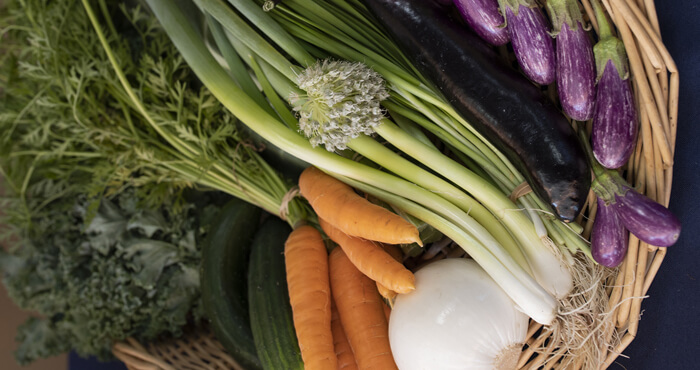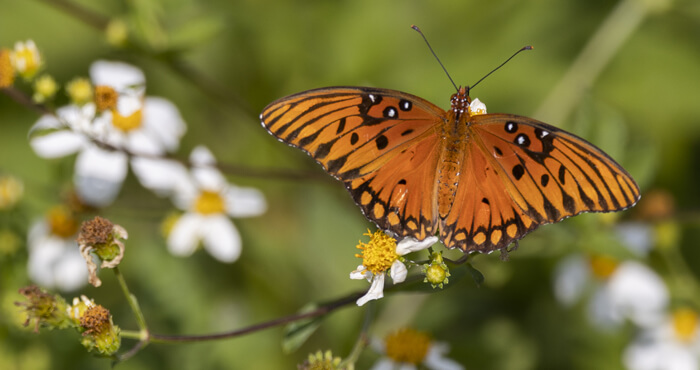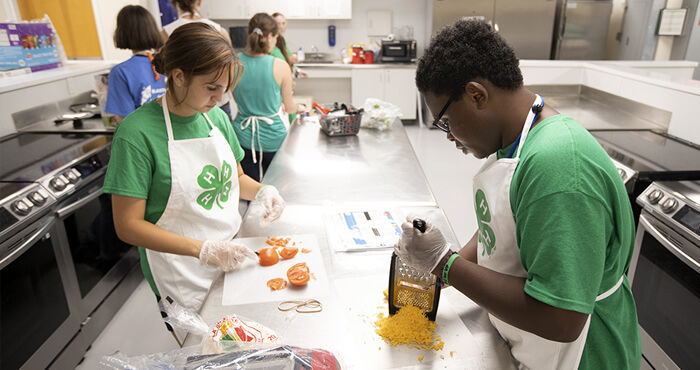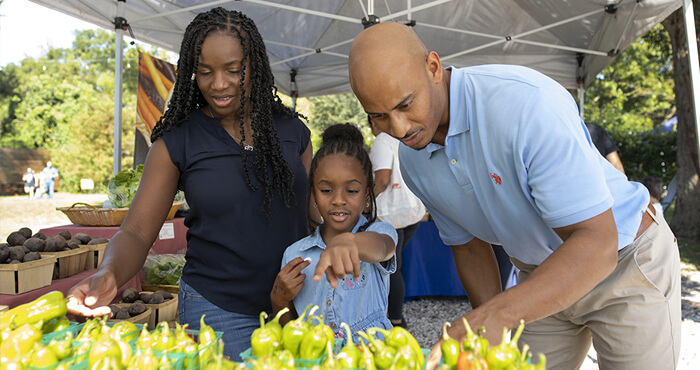
Pasture and Forage Crops for Horses
Florida is home to over 500,000 horses, and in our climate, they can be fed on pastures and forage crops nearly year-round. When planning your pasture, consider the horse’s digestive system, which is simpler and more sensitive than cattle’s. Grazing forages need to be higher quality and less fibrous. Although horses can receive the majority of their feed from pastures, this requires careful planning and production of forage crops.
Pasture Role
Pastures serve dual roles for horses: an area for exercise and a source of high quality forage. Your choice of forage will depend on the purpose of the pasture. Higher nutrition forages will require more management than those that simply provide cover.
Horses not receiving supplemental feed will eat about 1.5%–2.5% of their body weight of forage per day. Even on good quality pasture and hay, ensure your horses receive adequate fiber as well as vitamins and minerals.
Site
Pastures can be grown in almost all Florida locations. Variations in climate and soil will favor some forage crops over others. Soil amendments can overcome fertility and pH issues. Be sure to consider soil drainage of the site in choosing your crop. The climate of your location will also determine what cold tolerance your forage must have for winter grazing.
Land Area and Stocking Rate
The amount of land required for each horse depends upon:
- The type and productivity of the pasture crop
- The size and age of the horse
- The amount of grain and supplement feed
- Grazing management (such as using rotational grazing)
On less productive sites, a mature horse might require 2–2.5 acres of pasture or 1–1.5 acres on productive, well-managed pasture during the summer. When pastures are stocked more than one horse per acre, the pasture cannot support feeding as its primary role—the pasture becomes an exercise area and feeding is secondary.
Be sure to consider seasonal variation in forage yield and quality. During wintertime, supplemental feeds may be needed to provide proper nutrition for the horse. Generally, pastures can have a higher stocking rate in summer than in the winter.
Protect your pasture by not putting too many horses on it for too long—this can deplete forage and allow weeds to take over.
Forage Varieties
Consider the following characteristics in choosing forage species and cultivars:
- Soil and climate needs
- Season of growth
- Forage use (grazed or hay)
- Class of horse (breeding stallion, mare, growing horse)
- Level of management required for optimal pasture production versus the abilities of the manager
For a detailed discussion of forage crops, look over the Florida Forage Handbook.
Perennial Grasses
Bahiagrass
An ideal, general-use pasture grass. It can withstand heavier grazing, but its nutrition value is low in late summer months. Mature bahiagrass is fibrous and low in feeding value.
Improved Hybrid Bermudagrass
Vigorous and highly productive, excellent hay crop. Bermudagrass has higher growth requirements than bahiagrass and can be damaged by overgrazing.
Callide Rhodesgrass
Adapted to southern Florida, can withstand periodic flooding. Callide has better forage quality, but requires higher fertilization and controlled grazing.
Other warm season grasses of lower quality and production can invade pastures. Keep them out by not overstocking or overgrazing pastures.
Annual Grasses
Summer
Pearl Millet
Higher nutrition value, good complement to perennial grasses. Millet is highly productive and has rapid growth, which may make grazing management difficult. It will not tolerate flooding.
** Sorghum and sudangrass-sorghum hybrids CANNOT be grown because of prussic acid poisoning.
Winter
Cool-season grasses can extend grazing through the winter. Overseed perennial grasses or sow in a separate area.
Small Grains
Oats, rye, and wheat all provide good winter grazing if planted in the fall. They require good drainage and intensive management.
Ryegrass
A valuable winter forage crop. Ryegrass has a high moisture requirement. Plant it alone or in mixed stands with small grains or cool-season legumes.
Legumes
Summer
Rhizoma Peanut
Excellent horse forage, substitute for alfalfa. Perennial peanut is adapted to well-drained soils and can be grazed or cut for hay or silage.
Alyceclover
Excellent hay crop, high quality. Current types are susceptible to root-knot nematodes and can’t withstand long periods of flooding.
Winter
Clovers
Excellent winter pasture, mix with small grains or ryegrass for overseeding. White and red clovers are better for wetter sites, crimson and arrowleaf for well-drained.
Alfalfa
Forage choice, fed as hay. It can be grown on well-drained sites with intensive management.
Pasture Management
Good management can keep your pasture as the main source of feed for your horses. Grow a combination of forage plants on pastures to provide a variety of nutritional sources.
Establishment
Test the pasture soil to determine what amendments it needs. The dry season is best for land clearing and tilling. Perennial crops need a tilled, weed-free seedbed.
Forage crops can be seeded or grown from vegetative materials. Annual grasses and legumes can be overseeded on perennial grass or sown on prepared seedbeds.
Maintaining
Routine soil tests will help set up a reliable amendment program to maintain productive pastures. Fertilization and liming requirements will change over time and will also depend upon whether you graze or harvest the forage. Grazing forage recycles nutrients back into the pasture and often requires less fertilization.
Grazing, mowing, and weed removal will help control pasture weeds. Spreading pasture manure and mowing un-grazed areas will improve the quality and utilization of the pasture.
Pastures can be continuously or rotationally grazed. Continual grazing has the horses on the same pasture for the entire season or year. Rotational grazing divides the pasture into paddocks that are grazed in a sequential order. Rotational grazing efficiently maintains and utilizes productive pastures by preventing overgrazing.
Hay
Hay is the most important supplementary feed and the primary source of fiber for horses. Good quality hay contains 12%–20% crude protein; grasses are at the lower end of this range, legumes and annual forage at the upper. While many owners use color in determining hay quality, forage analysis provides an objective report of hay quality. Contact your local Extension agent about hay sampling and analysis.
Hay production is limited to the spring and fall in Florida when there is forage crop growth and weather that allows for drying of the cut material. Some forage crops are better as hay than others, which might influence the planning, forage choice, and management and division of pastures.
For a more in depth discussion of pasture planning and management, refer to the source document "Pastures and Forage Crops for Horses" or contact your local Extension agent.
Adapted and Excerpted From:
Y.C. Newman, et al, "Pastures and Forage Crops for Horses" (SS-AGR-65), Agronomy Department (reviewed 08/2014).
RESOURCES
UF/IFAS Publications
- Agribusiness
- Agricultural Safety
- Agronomy
- Crops
- Florida Forage Handbook
- Fruits and Vegetables
- Livestock and Poultry
- Nurseries and Greenhouses
- Soil and Water
- Sustainable Agriculture
- Weed Management in Field Crops and Pasture Grasses (WMG)
State & Federal Agencies
- Florida Department of Agriculture and Consumer Services (FDACS)
- Fish and Wildlife Research Institute--Florida Fish and Wildlife Conservation Commission
- Florida Department of Environmental Protection
- South Florida Information Access (SOFIA)—U.S. Geological Survey
- U.S. Department of Agriculture (USDA)
- U.S. Forest Service--USDA
- U.S. Environmental Protection Agency (EPA)
- U.S. Fish & Wildlife Service
- U.S. Geological Survey (USGS)





.jpg)

.jpg)